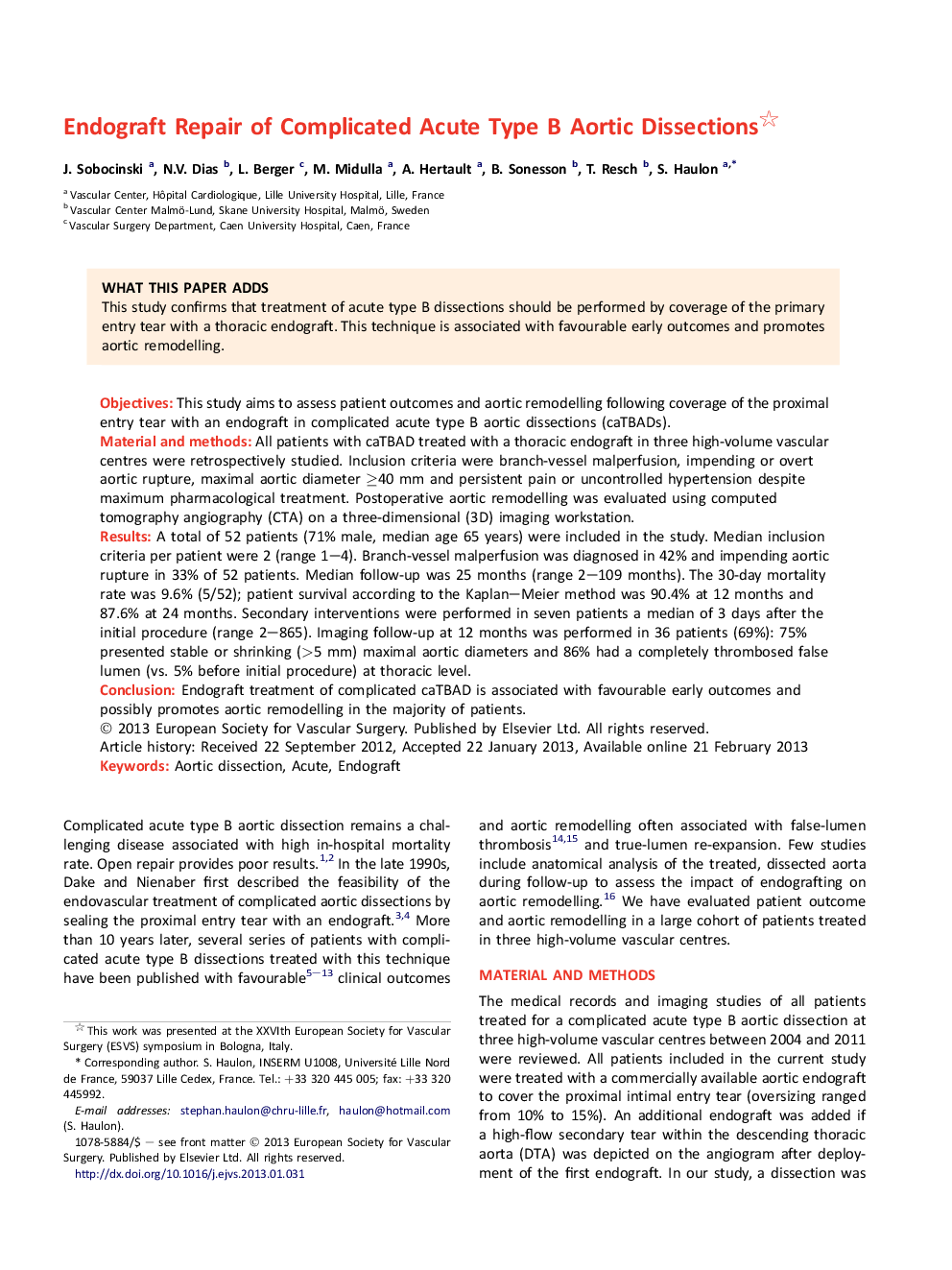| Article ID | Journal | Published Year | Pages | File Type |
|---|---|---|---|---|
| 2912094 | European Journal of Vascular and Endovascular Surgery | 2013 | 7 Pages |
ObjectivesThis study aims to assess patient outcomes and aortic remodelling following coverage of the proximal entry tear with an endograft in complicated acute type B aortic dissections (caTBADs).Material and methodsAll patients with caTBAD treated with a thoracic endograft in three high-volume vascular centres were retrospectively studied. Inclusion criteria were branch-vessel malperfusion, impending or overt aortic rupture, maximal aortic diameter ≥40 mm and persistent pain or uncontrolled hypertension despite maximum pharmacological treatment. Postoperative aortic remodelling was evaluated using computed tomography angiography (CTA) on a three-dimensional (3D) imaging workstation.ResultsA total of 52 patients (71% male, median age 65 years) were included in the study. Median inclusion criteria per patient were 2 (range 1–4). Branch-vessel malperfusion was diagnosed in 42% and impending aortic rupture in 33% of 52 patients. Median follow-up was 25 months (range 2–109 months). The 30-day mortality rate was 9.6% (5/52); patient survival according to the Kaplan–Meier method was 90.4% at 12 months and 87.6% at 24 months. Secondary interventions were performed in seven patients a median of 3 days after the initial procedure (range 2–865). Imaging follow-up at 12 months was performed in 36 patients (69%): 75% presented stable or shrinking (>5 mm) maximal aortic diameters and 86% had a completely thrombosed false lumen (vs. 5% before initial procedure) at thoracic level.ConclusionEndograft treatment of complicated caTBAD is associated with favourable early outcomes and possibly promotes aortic remodelling in the majority of patients.
